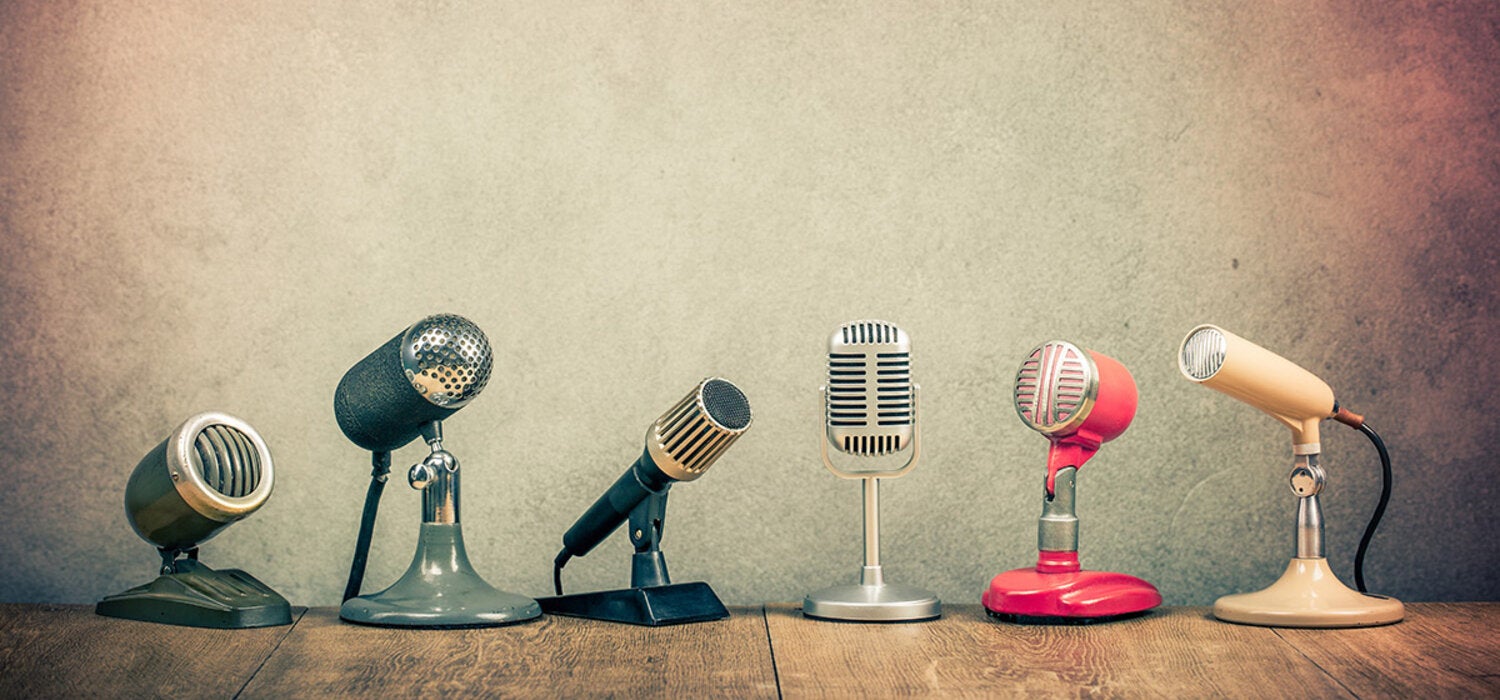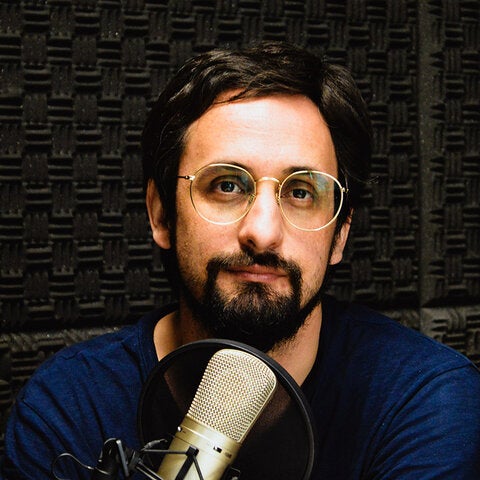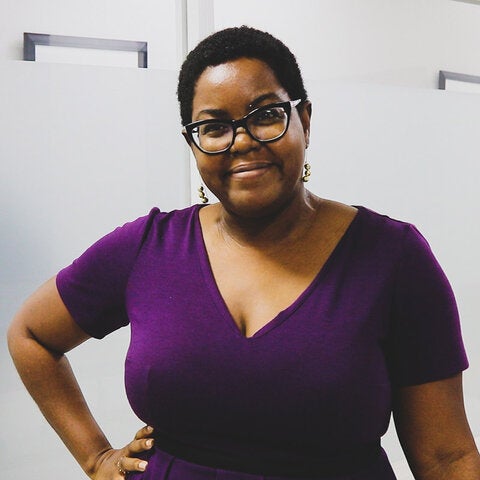Washington, D.C., 9 September 2019 (PAHO)— Latin American journalists are redefining how they communicate about suicide. For many years, cases of suicide have been treated as a spectacle in the media or they have been silenced for fear of “contagion”.
However, responsible coverage can contribute to suicide prevention by reducing the risk of copycat behavior, helping to change false perceptions, and encouraging people to seek help, said Claudina Cayetano, regional advisor on mental health at the Pan American Health Organization (PAHO).
Since the World Health Organization (WHO) published Preventing Suicide: A resource for media professionals in 2000, many journalists and media workers have changed their way of reporting on the issue.
“We have seen changes in how journalists communicate about suicide. It’s not treated so much anymore like a spectacle or a heroic act of love, like Romeo and Juliette, but as a fact. It has complex causes, but it can be prevented,” Cayetano explained.
In the Americas, there are over 81,000 deaths by suicide every year. The leading methods were suffocation (44%), firearms (31%), alcohol and drug poisoning (9%), and poisoning by pesticides and other chemicals (7%).
PAHO has been conducting virtual and on-site training on the subject. In 2017, more than 130 journalists, communicators, and mental health professionals from 30 countries in the Region participated in an online workshop. Health ministries, together with PAHO country offices, also organized meetings to promote responsible coverage in their countries. These included Argentina, Trinidad and Tobago, and Uruguay, among others.
Leonardo Rolón, a journalist at Reconquista in the province of Santa Fe, Argentina, took part in a training workshop on “Addressing suicide in the news: resources for journalists”, offered by the provincial government and PAHO/WHO. The workshop was held in August last year, in the leadup to World Suicide Prevention Day (10 September).
Rolón and the other participants analyzed the situation of suicide at the regional and national levels, the importance of this subject within the public health framework, the key role of communication, and recommendations on reporting on suicide, with communicators as key partners in prevention.
“After the workshop, there were three occurrences in the area within a single week. We decided to change our coverage. We included banners on suicide prevention to illustrate the reports and we shifted the focus to make it a health issue instead of police news,” the journalist explained. It is important to note that this change in focus did not affect readers’ interest. “We had the same number of visits and the same consumption of information,” Rolón emphasized.
The training provided “an opportunity to think about how to address this subject. And, as journalists, we began to think of ourselves as key actors in certain public health issues. In our profession, we are used to acting as jacks-of-all-trades. We have to improvise and if we don’t have the right information, we can make mistakes. We have to be aware of the reach we have when we write or speak in the media.”
“By shifting the perspective so that this kind of news has a public health focus, we can help readers think about the issue. And if we can help someone, that’s doubly rewarding,” he said, adding that the workshop provided him with “essential tools” that are not taught in universities.
Liliana Olguín, Mental Health Director for Santa Fe, said that the problem of suicide cannot be solved by the health sector alone. Rather, it requires multisectoral coordination in which the media also plays an important role in prevention and public awareness.
— Read one of Leonardo Rolón’s reports.
For several years, the Ministry of Health of Uruguay has been aware of the need to provide journalists with technical information so that they can act as partners in health promotion and dissemination.
“We understand that the work of journalists in all media is essential in helping to change habits and behaviors in the population, and we often see that this is not done properly for lack of information,” said Natalia Nogués, communications director at the Ministry of Health. “Providing data and training is part of our responsibility.”
Suicide is an issue that must be properly addressed by the media, said Nogués, who herself had a lengthy career as a journalist in Uruguay. “For many years it was believed that the media should not mention the subject, due to a possible “contagious effect”. But it has been proven that talking about it more—and in a better way—helps to prevent it.”
In Uruguay, an understanding emerged that the media should be part of the solution in suicide prevention. As a result, with support from PAHO/WHO, the Ministry of Health organized a working breakfast with journalists from across the media spectrum earlier this year. “We clearly saw that this effort yielded results. The very next day the issue was being dealt with and discussed in a completely responsible way on news reports and programs,” Nogués explained.
Emiliano Zecca, a journalist at No Toquen Nada, also participated in the training. His radio news program on DelSol FM is one the most popular in the country.
“Suicide is an act that can be prevented. In all cases—even those that may seem to have less repercussion—what we write or say as journalists can affect how the people who read us or listen to us think,” he said. A journalist’s responsibility is to focus on how the reporting is done, Zecca added. “This helps to get around misconceptions, for example, that suicide is an unexpected act, that it can be explained by a single factor, or that it should not be talked about.”
Zecca said the workshop helped him solidify certain concepts and understand that it is crucial to prioritize the issue, putting it on the public agenda so that it can be talked about and understood. After talking about suicide on the radio after the training, he said, the program received messages of thanks from people in the audience who had faced suicide-related situations in the past, without knowing how to respond. “That simply reflects the need to make the issue more visible,” he concluded.
— Should we talk about suicide? The answer is yes, and the important thing is how, by Emiliano Zecca, DelSol FM.
As part of a strategy to reduce the suicide rate in the country, the Ministry of Health of Trinidad and Tobago, together with PAHO/WHO, held an awareness-raising workshop with representatives of local news media.
“Suicide is an important health problem in Trinidad and Tobago. We have one of the highest rates in the Americas, so we are looking at different prevention strategies. We saw that there was great room for improvement in the way the media was reporting on the subject,” explained Ashvini Baball, manager of the mental health unit at the Ministry of Health of Trinidad and Tobago.
The workshop, held on March 2017, involved journalists, reporters, editors, radio announcers, and bloggers, among others, in a national conversation on the media’s role in suicide prevention. During the activity, experts shared evidence on the impact of responsible and irresponsible articles on suicides and shared good practices in coverage of the issue.
Soyini Grey, a senior producer at the CNC3 network, said that the workshop taught her that the media should not make assumptions about the cause of death, but should wait for the medical report. And they should not report on the contents of a suicide note or trivialize the reasons for the act, which is linked to mental health problems in 90% of cases. “We should provide the facts, not make speculations, not sensationalize… let people know that there are signs that indicate suicidal behavior and help them identify those warning signs and offer advice on asking for help.”
The workshop also outlined a document on best practices in reporting on suicide, the first of its kind in the Caribbean. The document was then developed in greater depth by the Ministry of Health and evaluated by an expert panel on the subject and by journalists. In September 2018, the Ministry of Health and PAHO issued guidelines with 11 best practices for responsible coverage of suicide and self-inflicted harm and distributed it to media outlets in the country.
To measure the impact of the guidelines, a frame of reference was developed, with PAHO support, to evaluate how the media adhered to them. Published articles that contain the word ‘suicide’ in online newspapers are monitored and evaluated. A mental health officer at the health ministry evaluates the news in relation to the 11 best practices and scores them as good, poor, neutral, not applicable. “We have seen an improvement in the articles since then, and an intention to align with the recommendations,” Baball said.
Between September 2018 and July 2019, a total of 53 articles were evaluated. Of these, 18 (34%) were scored as good, four were considered poor in the sense that they did not follow the guidelines, and four were neutral. When evaluating the information presented in the news reports, such as mentioning suicide prevention strategies, support systems, and statistical information, five of 53 articles received a good score, 17 were poor, and 18 neutral.
The media and authors whose articles received a poor score were contacted in order to jointly analyze their content and promote responsible coverage. There was a noticeable change in the news published between March and July when only one article received a poor score because it failed to present the recommended information, Baball said.
A shift has begun toward responsible media coverage of suicide and it is expected to have a contagious effect in newsrooms around the world. This should help to prevent many deaths from complex, but avoidable causes.
- Avoid describing suicide as something that can’t be explained; describe the warning signs.
- Avoid glorifying or romanticizing suicide and try to present a balanced story about the person.
- Avoid including the method, location, or details about the person who died; limit details to the facts that the audience needs to know.
- Avoid portraying suicide as an acceptable response to life’s difficulties.
- Avoid sensationalistic headlines.
- Avoid harmful graphics and photos.
- Avoid the use of stigmatizing language.
- Do not share the contents of a suicide note.
- Avoid quoting the police or the first people to arrive on the scene.
- Provide resources whenever possible, such as a helpline number.







